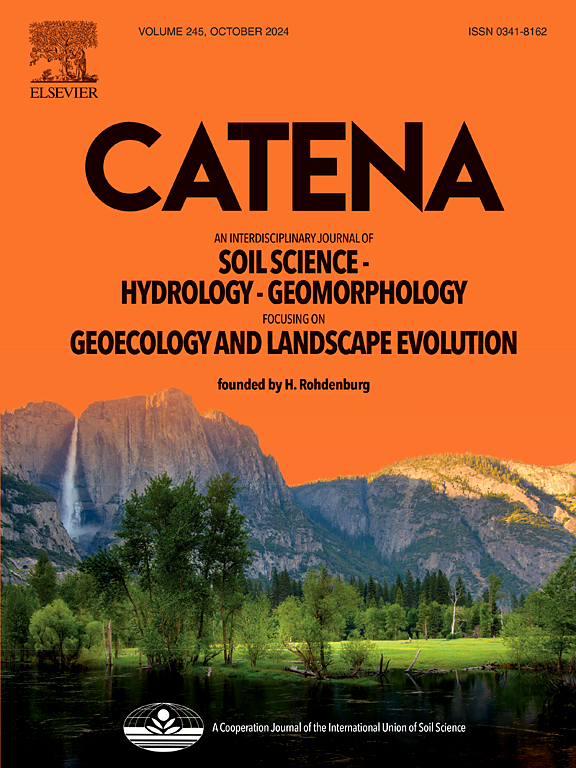Control of hydrologic conditions and vegetation composition on carbon dynamics characterized by 13C enrichment in a dune-meadow cascade ecosystem in a semi-arid region
2023-10-01 null null 231(卷), null(期), (null页)
The variation of 13C enrichment (& UDelta;13C and & UDelta;& delta;13C) is an effective indicator of the spatiotemporal dynamics of carbon stock. However, based on 13C enrichment, the effects of global climate change, land use types and historical vegetation succession on carbon dynamics have been found to be equivocal. Taking semi-mobile dune (SD) and meadow wetland (MW) ecosystems in the Horqin Sandy Land as examples, this study examined the stable carbon isotope ratios (& delta;13C) during the growing seasons in 2019 and 2020, and determined the factors controlling the continuum & delta;13C. The results revealed that throughout the carbon migration process, under different physiological mechanisms of carbon assimilation, distribution, and respiration, the seasonal variation of carbon isotope patterns exhibited significant differences in the air-plant-soil continuum of dune and meadow ecosystems. The MW with long-term stable vegetation coverage had higher soil carbon turnover than that in SD. In SD, both long-term and short-term restoration-accelerated soil carbon turnover. The effect of soil moisture (Ms) on & UDelta;& delta;13C (the surface soil & delta;13C minus leaf & delta;13C) will exceed that of air temperature in SD and MW. In MW, field capacity (FC) was the decisive indicator of various sources of Ms (rainfall, groundwater) affecting 13C enrichment variation. & UDelta;13C (the discrimination of leaf carbon isotope) exerted a positive effect on & UDelta;& delta;13C only when Ms at 0-20 cm < FC, indicating the variable effect of photosynthesis on soil respiration throughout the growing seasons. Moreover, vegetation composition can also affect the extent to which soil respiration responds to photosynthesis.
相关推荐
- The impact of irrigated agriculture on landslide activity: A spatio-temporal analysis in Heifangtai, China [2023-10-01]
- Meteorological drought predictability dynamics and possible driving mechanisms in a changing environment in the Loess Plateau, China [2023-10-01]
- A Comparative Study of Evapotranspiration Simulation in Semiarid Sandy Land Using Two Surface Energy Balance Models [2023-10-01]
- Resistance of grassland productivity to drought and heatwave over a temperate semi-arid climate zone [2023-10-01]
- Understanding soil and ecosystem respiration in a dune-meadow cascade ecosystem [2023-10-01]



